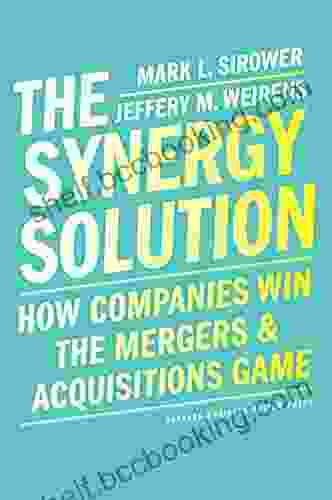Unveiling the Power of Linear Programming: A Comprehensive Guide for Economists and Decision Makers

Linear programming (LP) is a powerful mathematical technique used to solve a wide range of optimization problems. It is a fundamental tool in economics and decision science, and is used in a variety of applications, including resource allocation, production planning, and financial planning.
In this article, we will provide a comprehensive overview of linear programming, covering its basic concepts, formulations, and applications. We will also discuss some of the advanced techniques that can be used to solve more complex LP problems.
Linear programming is a type of optimization problem that seeks to maximize or minimize a linear objective function, subject to a set of linear constraints. The objective function is a linear combination of the decision variables, and the constraints are linear equations or inequalities.
4.7 out of 5
| Language | : | English |
| File size | : | 19510 KB |
| Text-to-Speech | : | Enabled |
| Screen Reader | : | Supported |
| Enhanced typesetting | : | Enabled |
| X-Ray for textbooks | : | Enabled |
| Print length | : | 184 pages |
The general form of a linear programming problem is as follows:
maximize (or minimize) z = c₁x₁ + c₂x₂ + ... + cₙxₙ subject to a₁₁x₁ + a₁₂x₂ + ... + a₁ₙxₙ ≤ b₁ a₂₁x₁ + a₂₂x₂ + ... + a₂ₙxₙ ≤ b₂ ... aₘ₁x₁ + aₘ₂x₂ + ... + aₘₙxₙ ≤ bₘ x₁ ≥ 0, x₂ ≥ 0, ..., xₙ ≥ 0
where: * z is the objective function * x₁, x₂, ..., xₙ are the decision variables * c₁, c₂, ..., cₙ are the coefficients of the objective function * a₁₁, a₁₂, ..., a₁ₙ, ..., aₘ₁, aₘ₂, ..., aₘₙ are the coefficients of the constraints * b₁, b₂, ..., bₘ are the right-hand side constants of the constraints <h2>Formulations</h2> Linear programming problems can be formulated in a variety of ways. The most common formulation is the standard form, which is given above. However, there are also other formulations, such as the slack form and the surplus form. The slack form is obtained by adding slack variables to the constraints. Slack variables are non-negative variables that represent the amount by which the left-hand side of a constraint falls short of the right-hand side. The surplus form is obtained by adding surplus variables to the constraints. Surplus variables are non-negative variables that represent the amount by which the right-hand side of a constraint exceeds the left-hand side. <h2>Applications</h2> Linear programming has a wide range of applications in economics and decision science. Some of the most common applications include: * **Resource allocation**. Linear programming can be used to allocate resources, such as labor, capital, and raw materials, in an optimal way. This can help businesses to maximize their profits or minimize their costs. * **Production planning**. Linear programming can be used to plan production schedules in Free Download to meet demand while minimizing costs. This can help businesses to improve their efficiency and profitability. * **Financial planning**. Linear programming can be used to plan financial investments and decisions. This can help businesses to maximize their returns and minimize their risks. <h2>Advanced Techniques</h2> There are a number of advanced techniques that can be used to solve more complex LP problems. These techniques include: * **The simplex method**. The simplex method is a widely used algorithm for solving LP problems. It is a systematic procedure that iteratively moves from one vertex of the feasible region to another until the optimal solution is found. * **The interior-point method**. The interior-point method is a more recent algorithm for solving LP problems. It is often faster than the simplex method, but it is more complex to implement. * **The decomposition method**. The decomposition method is a technique for solving large LP problems by breaking them down into smaller subproblems. This can make it possible to solve problems that would otherwise be too large to solve. Linear programming is a powerful tool that can be used to solve a wide range of optimization problems. It is a fundamental tool in economics and decision science, and is used in a variety of applications, including resource allocation, production planning, and financial planning. In this article, we have provided a comprehensive overview of linear programming, covering its basic concepts, formulations, and applications. We have also discussed some of the advanced techniques that can be used to solve more complex LP problems. By understanding</body></html>4.7 out of 5
| Language | : | English |
| File size | : | 19510 KB |
| Text-to-Speech | : | Enabled |
| Screen Reader | : | Supported |
| Enhanced typesetting | : | Enabled |
| X-Ray for textbooks | : | Enabled |
| Print length | : | 184 pages |
Do you want to contribute by writing guest posts on this blog?
Please contact us and send us a resume of previous articles that you have written.
 Book
Book Novel
Novel Page
Page Chapter
Chapter Text
Text Story
Story Genre
Genre Reader
Reader Library
Library Paperback
Paperback E-book
E-book Magazine
Magazine Newspaper
Newspaper Paragraph
Paragraph Sentence
Sentence Bookmark
Bookmark Shelf
Shelf Glossary
Glossary Bibliography
Bibliography Foreword
Foreword Preface
Preface Synopsis
Synopsis Annotation
Annotation Footnote
Footnote Manuscript
Manuscript Scroll
Scroll Codex
Codex Tome
Tome Bestseller
Bestseller Classics
Classics Library card
Library card Narrative
Narrative Biography
Biography Autobiography
Autobiography Memoir
Memoir Reference
Reference Encyclopedia
Encyclopedia Platte Productions Llc
Platte Productions Llc Loriann Oberlin
Loriann Oberlin Jeff Kuehl
Jeff Kuehl Jeff W Bens
Jeff W Bens Jane Belk Moncure
Jane Belk Moncure Janis Ian
Janis Ian Robin Jones Gunn
Robin Jones Gunn Jan Zimmerman
Jan Zimmerman Ralph Cotton
Ralph Cotton Jeanie Buss
Jeanie Buss Jennifer Riel
Jennifer Riel Jay Sidhu
Jay Sidhu Jeff Root
Jeff Root Jareth Tempest
Jareth Tempest William Bligh
William Bligh Keri Bloomfield
Keri Bloomfield Manfred Kuehn
Manfred Kuehn Jane Blair
Jane Blair Jeff Somers
Jeff Somers Jayne Calvin
Jayne Calvin
Light bulbAdvertise smarter! Our strategic ad space ensures maximum exposure. Reserve your spot today!
 Rudyard KiplingFollow ·19.9k
Rudyard KiplingFollow ·19.9k Shannon SimmonsFollow ·2.7k
Shannon SimmonsFollow ·2.7k Chadwick PowellFollow ·13.1k
Chadwick PowellFollow ·13.1k Vladimir NabokovFollow ·9.3k
Vladimir NabokovFollow ·9.3k Trevor BellFollow ·15.3k
Trevor BellFollow ·15.3k Ricky BellFollow ·16.4k
Ricky BellFollow ·16.4k Kenneth ParkerFollow ·4.8k
Kenneth ParkerFollow ·4.8k José SaramagoFollow ·14.9k
José SaramagoFollow ·14.9k

 Carlos Drummond
Carlos DrummondHow Companies Win the Mergers and Acquisitions Game:...
In today's...

 Craig Blair
Craig BlairMastering The Delicate Balance Between Power And Peace
In today's ever-evolving world, the interplay...

 Wade Cox
Wade CoxUnveiling the Zen of Golf: A Journey to Inner Mastery
: The Harmony of Mind,...

 Gerald Bell
Gerald BellDarkness Triumphant: Three of the Catmage Chronicles
Synopsis ...

 Henry James
Henry JamesDarkness Rising: One of the Catmage Chronicles
A Captivating Fantasy Adventure...
4.7 out of 5
| Language | : | English |
| File size | : | 19510 KB |
| Text-to-Speech | : | Enabled |
| Screen Reader | : | Supported |
| Enhanced typesetting | : | Enabled |
| X-Ray for textbooks | : | Enabled |
| Print length | : | 184 pages |














